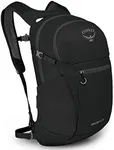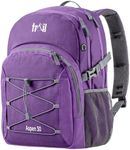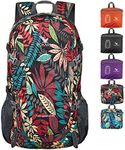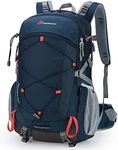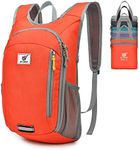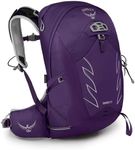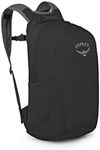Buying Guide for the Best Hiking Day Pack
Choosing the right hiking day pack is essential for a comfortable and enjoyable outdoor adventure. A day pack is designed to carry all the essentials you need for a day hike, such as water, food, extra clothing, and other gear. When selecting a hiking day pack, it's important to consider various specifications to ensure it meets your needs and preferences. Here are some key specs to consider and how to navigate them to find the best fit for you.CapacityCapacity refers to the volume of the pack, usually measured in liters. This spec is important because it determines how much gear you can carry. For a short day hike, a pack with a capacity of 15-20 liters is usually sufficient. For longer hikes or if you need to carry extra gear, consider a pack with a capacity of 20-30 liters. Think about the length of your hikes and the amount of gear you typically bring to choose the right capacity for you.
Fit and ComfortFit and comfort are crucial for a hiking day pack, as you'll be wearing it for extended periods. Look for packs with adjustable shoulder straps, hip belts, and back panels to ensure a snug and comfortable fit. Some packs come in different sizes or have adjustable torso lengths to accommodate various body types. Try on different packs and adjust the straps to find one that feels comfortable and distributes weight evenly.
WeightThe weight of the pack itself is important because a lighter pack will be easier to carry, especially on long hikes. However, lighter packs may have fewer features or less padding. Packs typically range from 1 to 3 pounds. If you prioritize minimalism and speed, go for a lighter pack. If you need more support and features, a slightly heavier pack might be a better choice.
VentilationVentilation refers to how well the pack allows air to flow between your back and the pack itself. Good ventilation helps keep you cool and reduces sweating. Look for packs with mesh back panels or suspended mesh systems that create a gap between your back and the pack. If you tend to hike in hot or humid conditions, prioritize packs with excellent ventilation.
Pockets and OrganizationPockets and organization features help you keep your gear organized and easily accessible. Common features include main compartments, front pockets, side pockets for water bottles, and hip belt pockets for small items. Consider how you like to organize your gear and choose a pack with the right combination of pockets and compartments. If you carry a lot of small items, look for packs with multiple pockets and organizational features.
Hydration CompatibilityHydration compatibility means the pack is designed to hold a hydration reservoir (water bladder) and has a built-in sleeve and hose routing. This spec is important if you prefer to drink from a hydration reservoir rather than carrying water bottles. If staying hydrated on the go is a priority for you, look for packs that are hydration compatible and check the size of the reservoir they can accommodate.
DurabilityDurability refers to how well the pack can withstand wear and tear. This is important because a durable pack will last longer and handle rough conditions better. Look for packs made from high-quality materials like ripstop nylon or polyester. If you frequently hike in rugged terrain or carry heavy loads, prioritize packs with reinforced stitching and durable fabrics.
Weather ResistanceWeather resistance refers to the pack's ability to protect your gear from rain and moisture. Some packs come with a built-in rain cover or are made from water-resistant materials. If you often hike in wet conditions, look for packs with good weather resistance or consider purchasing a separate rain cover. This will help keep your gear dry and protected.

